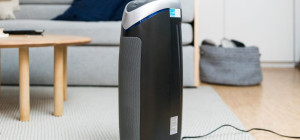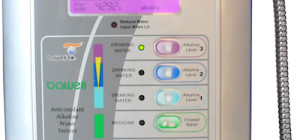 We all love Coffee and following quotes clearly show what exactly we feel about it:
We all love Coffee and following quotes clearly show what exactly we feel about it:
- Life begins after coffee
- A Yawn is a silent scream for coffee
- Given enough coffee, I could rule the world
- Coffee is always a good idea, Or even
- Give me coffee to change the things I can and wine to accept those that I can’t.
Most of us have common misconceptions about where the highest concentration of germs is found in the home. A research study by NSF International conducted to identify the germs hot spots in the house. It surprisingly revealed that the germiest place in the home is the kitchen while every one of us had perceived it to be the bathroom. This study was done by measuring the levels of yeast, mold, coliform bacteria and Staph bacteria. Results also concluded that kitchen accessories such as coffee maker reservoirs and counter-tops had more germs count than bathroom items like bathroom door knob. Infect about 50% of coffee makers had mold and yeast growing in their reservoirs.
Kelly Reynolds, The germ specialist from University of Arizona, has a similar opinion about it:
“Coffee makers are certainly a moist environment where mold and bacteria are known to grow in high numbers.” And she continued, “Our bodies can deal with them, but at some point they’ll grow to levels high enough to cause sickness”.
You are probably thinking a lot about how serious and complicated it can be to have Quality Coffee every time you need caffeine power when you’re feeling low, but it is not that cumbersome. Follow the steps described below to give the machine a good cleaning every now and again to keep it brewing strong.
Here is the Cleaning approach which should be followed:
a> Hot water isn’t enough to get this gunk out. Donna Duberg, assistant professor-clinical laboratory science from Saint Louis University, says “Water heated in the coffee maker — even the percolator types — is not hot enough to kill most germs”. Water needs to be heated at boiling point and boiling for one minute for killing harmful contaminants.
b> Cleaning Solution or Vinegar РAccording to Carolyn Fort from Good Housekeeping Research Institute, the most effective way to clean your coffee maker is vinegar in addition to sanitizing which decalcifies the mineral buildup from tap water. If you make use of classic coffee maker, Fort̩ suggests to clean it every day and to decalcify it.
c> If you use classic coffee machines, you should clean carafe, lid and filter basket daily with warm and sudsy water. Specifically, the case where you are using machine daily, it must be de-calcified at-least once in a month in hard water regions and frequently 2-3 months in soft water regions.
d> Fill the machine’s water chamber with equivalent amounts of white vinegar and water. A paper filter will be a good fit to use which will allow brewing until half the chamber remains empty.
e> Wait for half-an-hour: Turn the coffee maker off, wait for 30 minutes and then finish brewing.
f> Use a damp fabric to wipe the outside of the machine.
That’s the way you receive delicious and germ-free coffee. Do you have any questions? Please let me know in the comments area.
Resources:
https://appliancereviewer.co.uk/best-coffee-machines/
https://www.wikihow.com/Clean-a-Coffee-Maker
http://www.healthguidance.org/entry/14575/1/How-to-Clean-an-Automatic-Coffee-Maker.html







